Abstract
An intracellular accumulation of ethanol in Saccharomyces cerevisiae was observed during the early stages of fermentation (3 h). However, after 12 h of fermentation, the intracellular and extracellular ethanol concentrations were similar. Increasing the osmotic pressure of the medium caused an increase in the ratio of intracellular to extracellular ethanol concentrations at 3 h of fermentation. As in the previous case, the intracellular and extracellular ethanol concentrations were similar after 12 h of fermentation. Increasing the osmotic pressure also caused a decrease in yeast cell growth and fermentation activities. However, nutrient supplementation of the medium increased the extent of growth and fermentation, resulting in complete glucose utilization, even though intracellular ethanol concentrations were unaltered. These results suggest that nutrient limitation is a major factor responsible for the decreased growth and fermentation activities observed in yeast cells at higher osmotic pressures.
Full text
PDF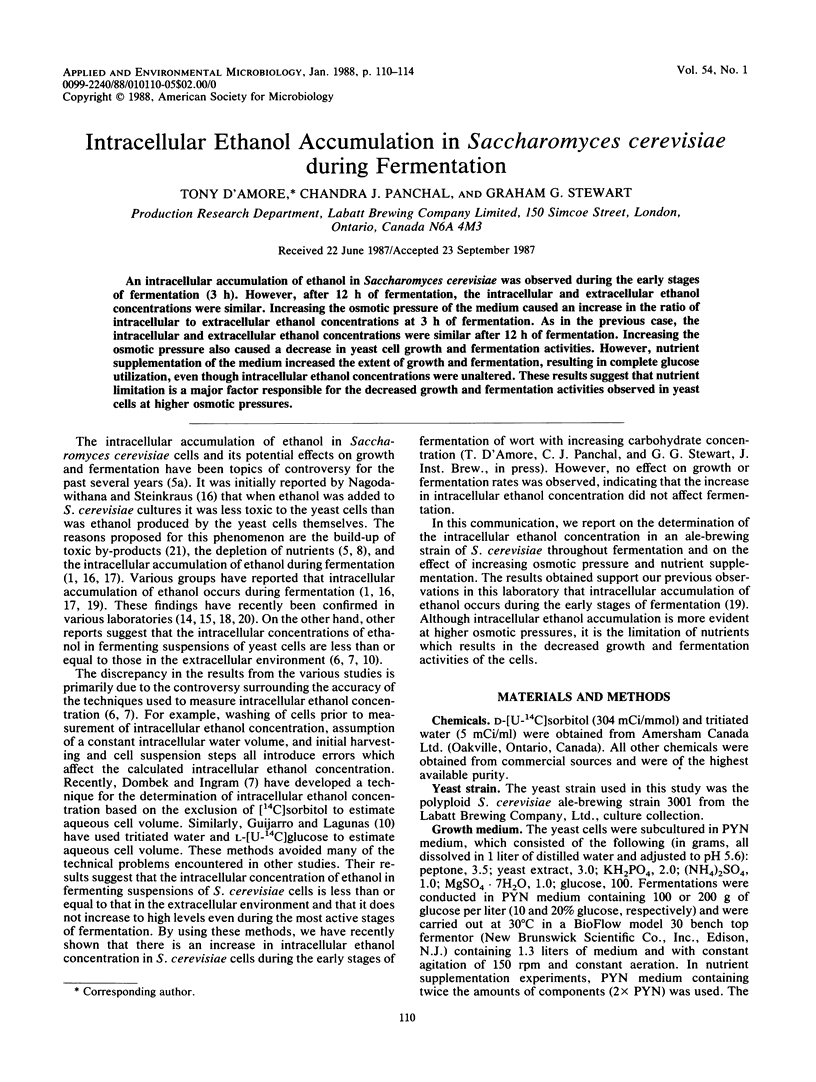
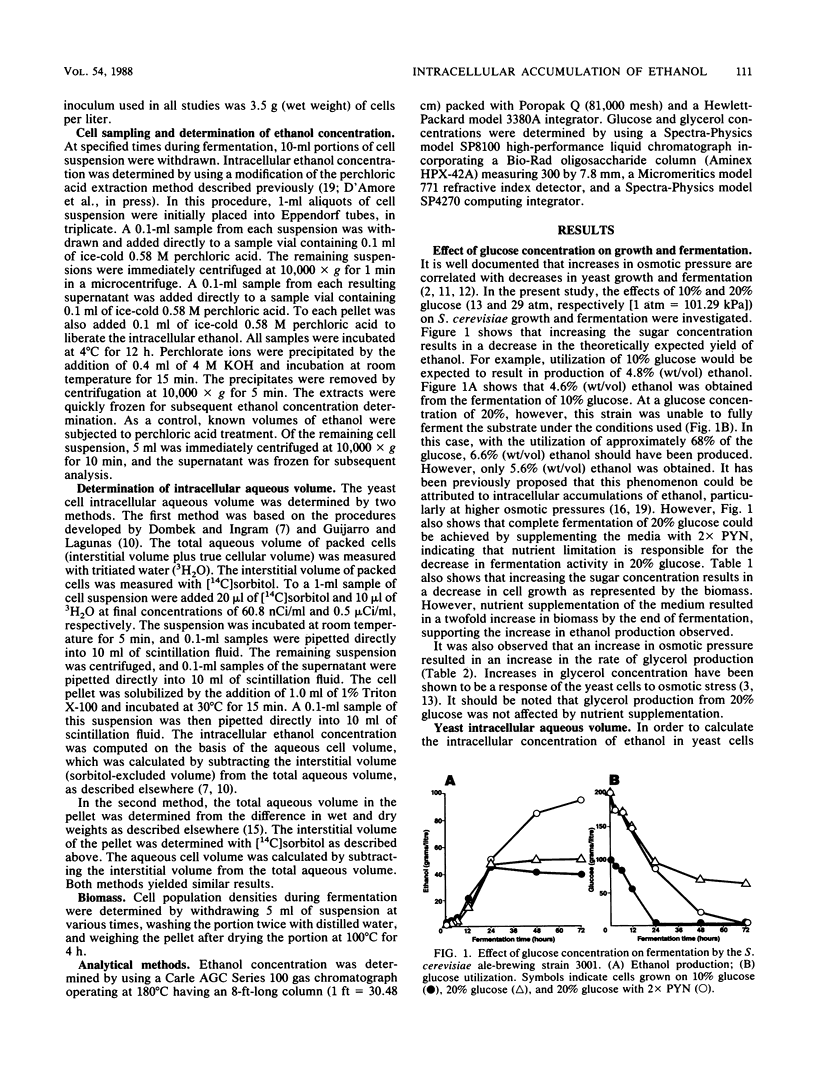
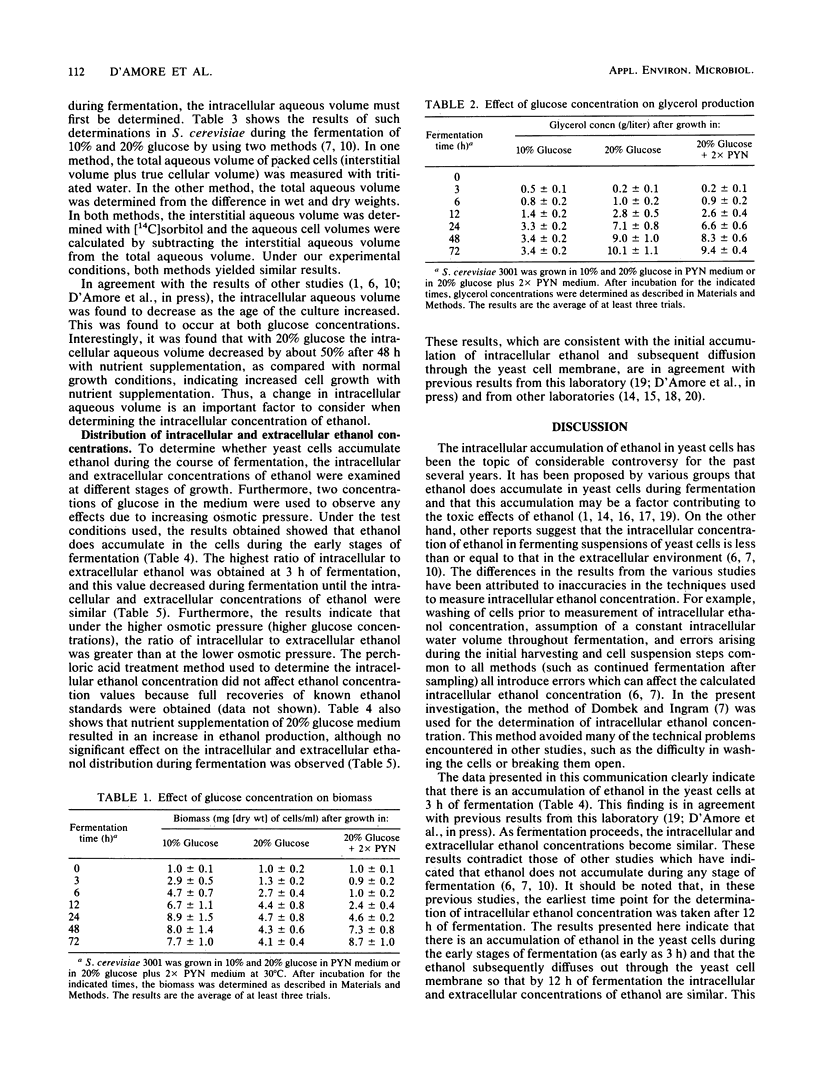
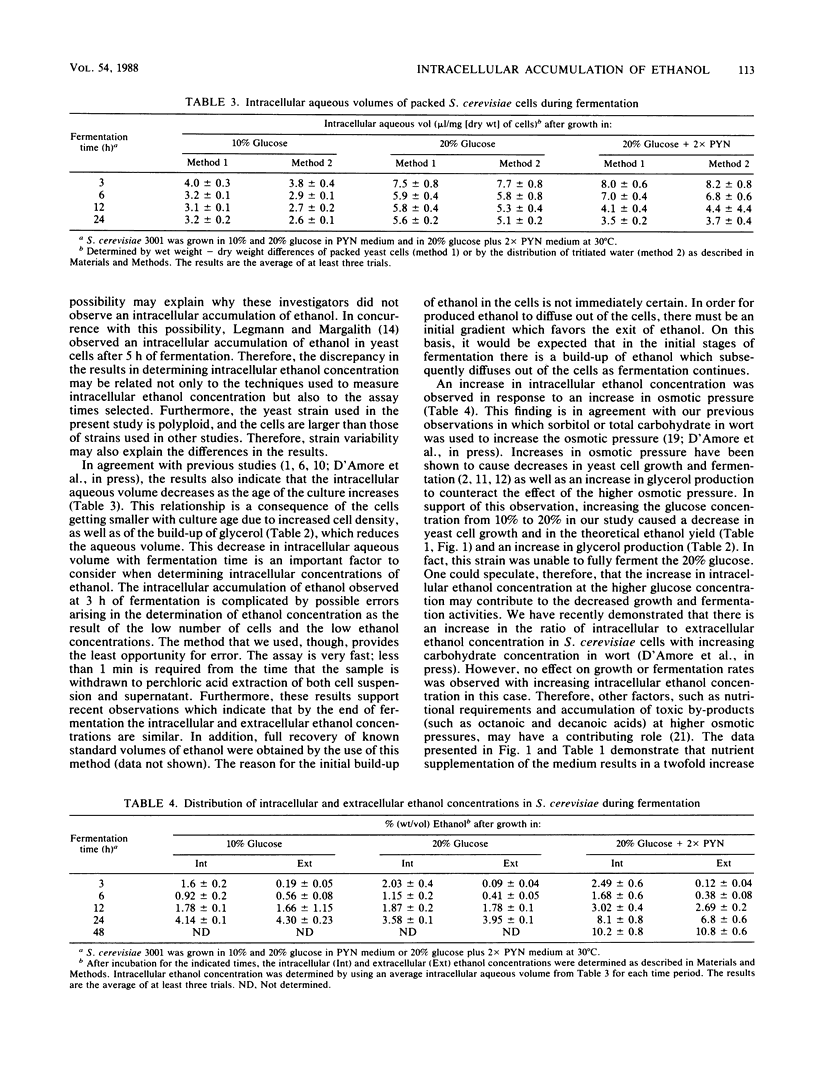
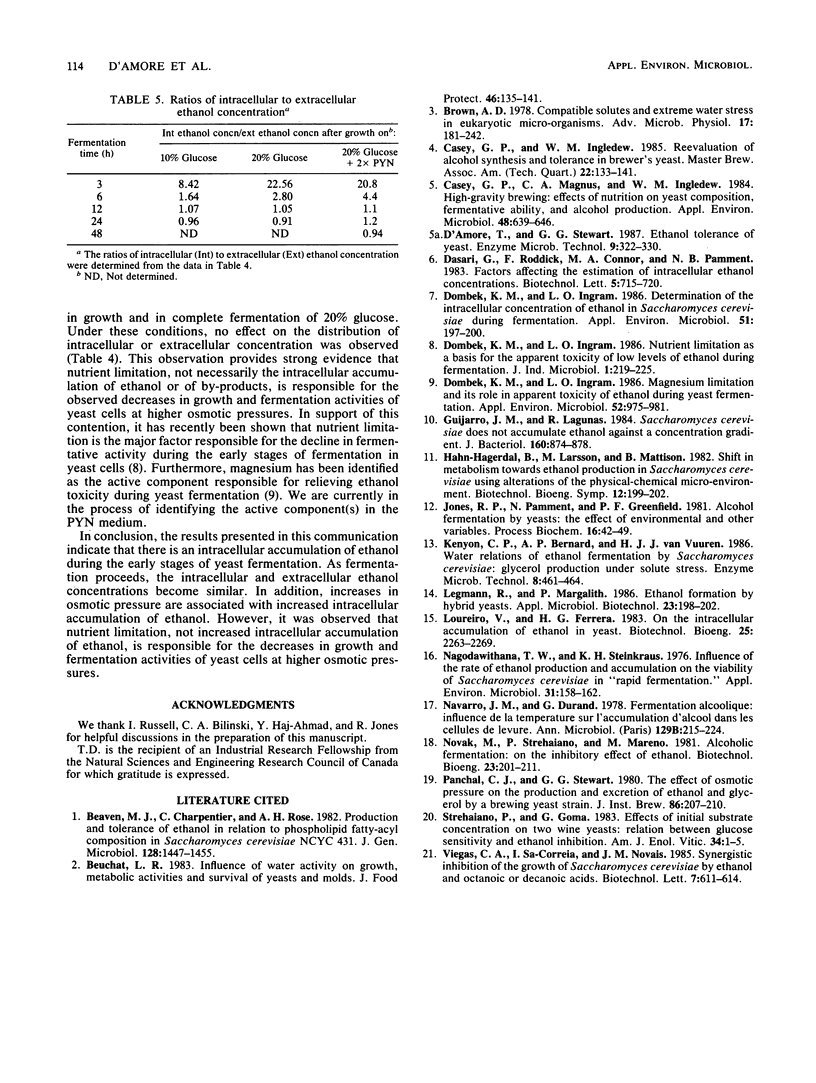
Selected References
These references are in PubMed. This may not be the complete list of references from this article.
- Brown A. D. Compatible solutes and extreme water stress in eukaryotic micro-organisms. Adv Microb Physiol. 1978;17:181–242. doi: 10.1016/s0065-2911(08)60058-2. [DOI] [PubMed] [Google Scholar]
- Casey G. P., Magnus C. A., Ingledew W. M. High-gravity brewing: effects of nutrition on yeast composition, fermentative ability, and alcohol production. Appl Environ Microbiol. 1984 Sep;48(3):639–646. doi: 10.1128/aem.48.3.639-646.1984. [DOI] [PMC free article] [PubMed] [Google Scholar]
- Dombek K. M., Ingram L. O. Determination of the intracellular concentration of ethanol in Saccharomyces cerevisiae during fermentation. Appl Environ Microbiol. 1986 Jan;51(1):197–200. doi: 10.1128/aem.51.1.197-200.1986. [DOI] [PMC free article] [PubMed] [Google Scholar]
- Dombek K. M., Ingram L. O. Magnesium limitation and its role in apparent toxicity of ethanol during yeast fermentation. Appl Environ Microbiol. 1986 Nov;52(5):975–981. doi: 10.1128/aem.52.5.975-981.1986. [DOI] [PMC free article] [PubMed] [Google Scholar]
- Guijarro J. M., Lagunas R. Saccharomyces cerevisiae does not accumulate ethanol against a concentration gradient. J Bacteriol. 1984 Dec;160(3):874–878. doi: 10.1128/jb.160.3.874-878.1984. [DOI] [PMC free article] [PubMed] [Google Scholar]
- Nagodawithana T. W., Steinkraus K. H. Influence of the rate of ethanol production and accumulation on the viability of Saccharomyces cerevisiae in "rapid fermentation". Appl Environ Microbiol. 1976 Feb;31(2):158–162. doi: 10.1128/aem.31.2.158-162.1976. [DOI] [PMC free article] [PubMed] [Google Scholar]
- Navarro J. M., Durand G. Fermentation alcoolique: influence de la température sur l'accumulation d'alcool dans les cellules de levure. Ann Microbiol (Paris) 1978 Aug-Sep;129B(2):215–224. [PubMed] [Google Scholar]


